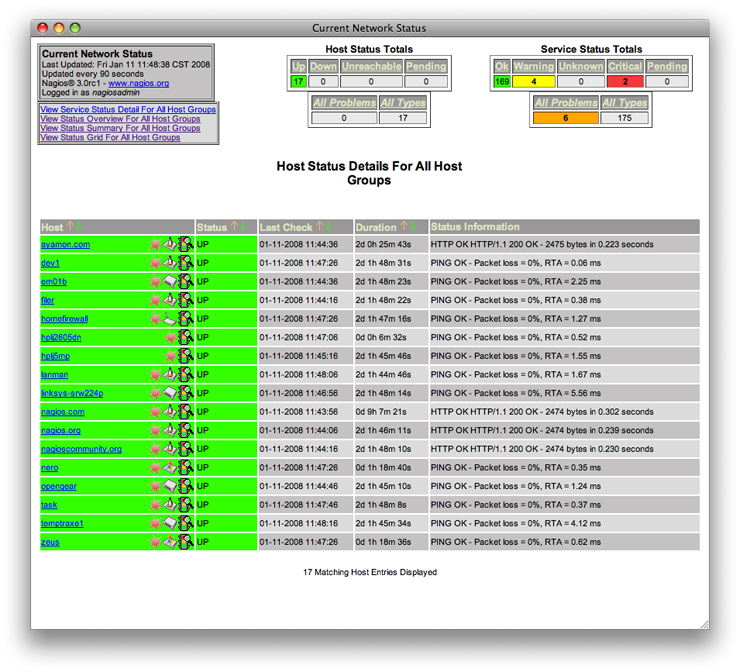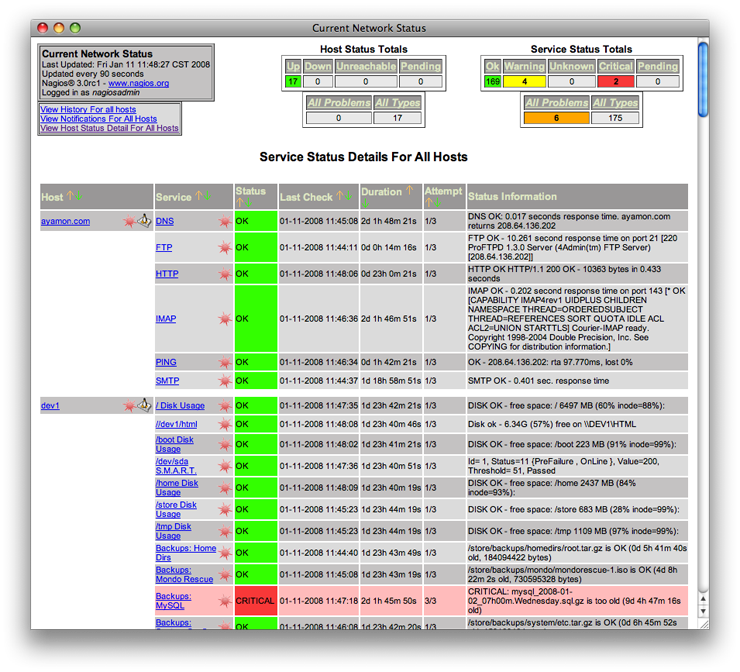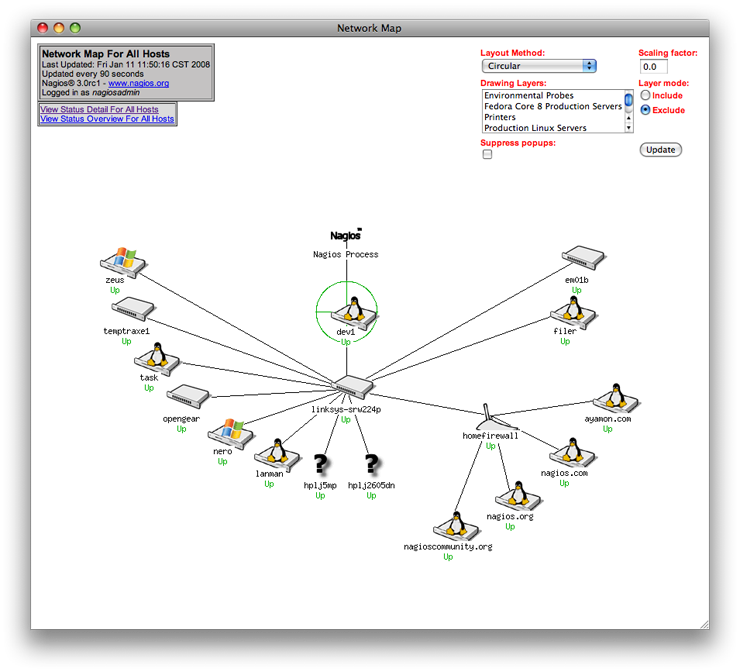UPDATE: If you're here for TrueCrypt installation details, check out our How-To for TrueCrypt 6.0a.
As promised, I've begun to test TrueCrypt's full disk encryption capability. For personal, one-off full disk encryption, and particularly for free, it appears to be a compelling product. It doesn't have any of the enterprise features that you will find in many of the current commercial products - there is no provision for key escrow, central reporting, or other features suited to enterprise use, but the software itself has a clean interface and is reasonably straightforward.
In my testing thus far, I've run into one crucial problem - I can't get a clean ISO burn of the restore disk. With no method to skip the process, and no work-around to simply check the rescue disk image against what it expects, there is no way to move past the CD/DVD check screen without some trickery.
I've tried on multiple machines, burned the image using three different ISO recording packages - all of which work for other ISO files, and TrueCrypt refuses to recognize the burn. The good news is that you can fool it for testing purposes - grab the free Microsoft virtual CD mounting program here.
You'll need to install and start the driver included in the package first, then you can mount the ISO. This doesn't do you any good for actual rescue - but it will let you successfully test the full volume encryption.
If you are taking TrueCrypt's full disk encryption for a test drive, make sure you do it on a test machine first! This is entirely at your own risk.
TrueCrypt full disk encryption walkthrough
1.
Download TrueCrypt and install it.
2. Start TrueCrypt, and select System, then Encrypt System Partition/Drive.

3. Select Encrypt System Partition/Drive. TrueCrypt spend a moment or two detecting hidden sectors, and will then display a menu asking for the number of operating systems. In this example, there is only one operating system, so we will select Single-boot, then click Next.
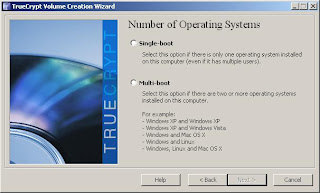
4. Select your encryption options. I'll select
AES as a reasonable choice - there are a number of schemes, including multi-algorithm options if you're particularly paranoid or have special encryption requirements. Note that
RIPEMD-160 is the only supported hash algorithm for system volume encryption.
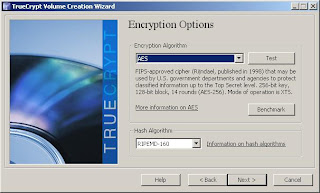
5. You will be asked to create a password - passwords over 20 characters are suggested by TrueCrypt. It will then use mouse movements to generate a random seed to feed into the encryption algorithm. Click Next again on the next screen unless you want to re-generate your keys.
6. Now you will have to create a rescue disk. This acts as a rescue disk for damaged boot loaders, master keys, or other critical data, and will also allow permanent decryption in the case of Windows OS problems. It also contains the contents of the disk's first cylinder where your bootloader usually resides. Provide a filename and location for the rescue disk.
7. TrueCrypt will now ask you to burn the rescue disk image to CD/DVD.
You cannot proceed without allowing TrueCrypt to verify that this has been done.
8. If you make it this far - and as I mentioned earlier, some burning software appears to not be TrueCrypt ISO friendly, then you're ready to go on with the encryption process. First, you will receive confirmation that your rescue CD is valid.

9. Now you need to choose your wipe mode - this is how your deleted data will be wiped from the disk. Select the mode that you're most comfortable with - for my own use, I'll select 3 pass wiping as a reasonable option.
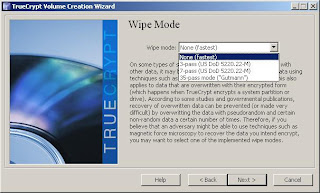
10. TrueCrypt will now perform a System Encryption Pretest - it will install the bootloader and require your password to get into the OS.
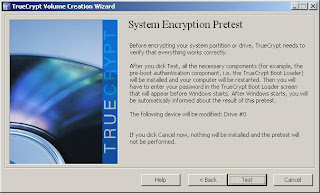
11. Once you've rebooted and successfully entered your password, you will receive a success message. TrueCrypt will then ask you to print the documentation for your rescue disk for future reference. Click ok, and you will move on to the encryption process.
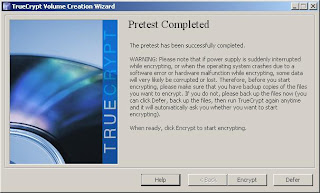
12. Your time to completion will depend on usage of the system, the size and speed of the disk, and a few other factors such as the wipe mode you selected. In my small scale test, a 4 GB test VM partition encrypted in about 15 minutes. I would expect non-virtual machines to see a performance boost over that, and machine that aren't seeing active use should move along at a nice clip.
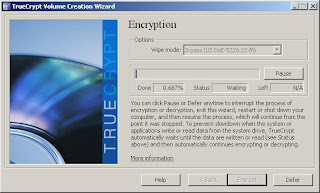
What does it look like when you're done? Well, on boot, you'll see a DOS style prompt for your password, after which everything else acts just like your normal machine.
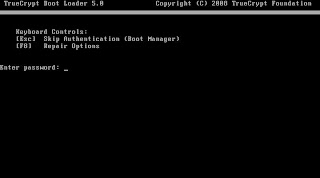
What's next? I'd like to find out if others are having similar issues with TrueCrypt's ISO creation process, and I'm interested in seeing performance differences between this and commercial products - hopefully someone with a nice test lab will benchmark them. MacOS support for encrypted volumes would be a great addition, and is one that I hope that the MacOS TrueCrypt port team tackles in the near future - I haven't found a vendor providing OS X full disk encryption yet, and that's definitely something the market needs.



